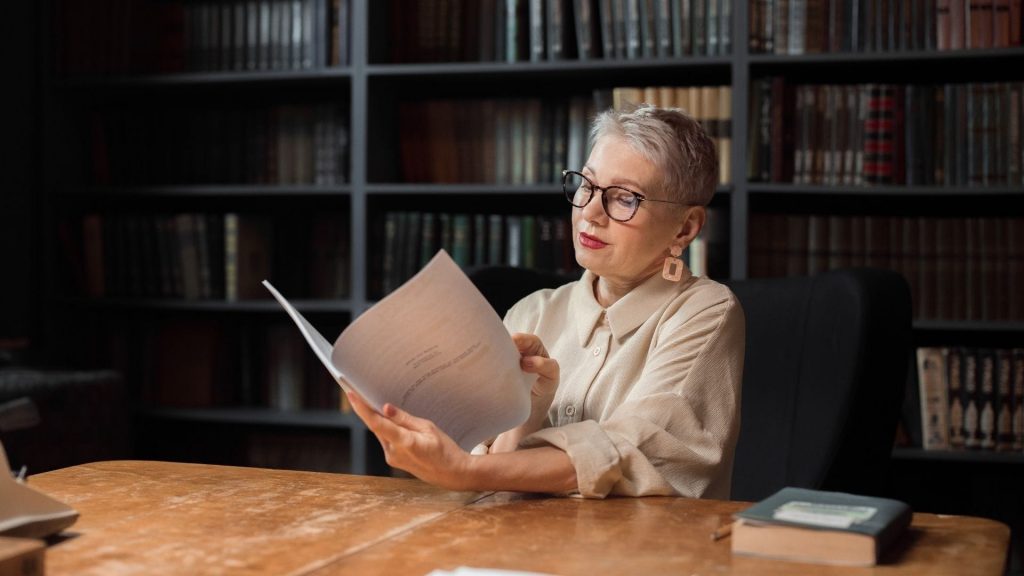

Is a Traditional Publishing Path Right for You as an Author?
Every author reaches a pivotal moment when the manuscript is finished and the question arises: how will this work find its way into the world. Is a traditional publishing path the right choice? The decision is no longer binary. Writers today can choose among traditional publishers, hybrid partnerships, or full self-publishing — each offering its own balance of credibility, control, and creative freedom.
This three-part Arkane series explores those choices in depth. The first instalment examines the traditional publishing route — still regarded as the hallmark of literary legitimacy, yet often misunderstood in its inner workings.

The Traditional Publishing Path: Prestige, Patience, and Partnership
Traditional publishing offers professional editing, design, distribution, and the weight of an established imprint. But entry is selective, and outcomes are rarely uniform. Only a small fraction of authors receive substantial promotional backing; these are usually the visible, credentialed, or commercially proven. For the majority — debut or mid-list writers — support extends to production and limited baseline marketing.
Within major houses, publishing operates as risk triage. Each season, a few front-list titles are prioritised for high-level investment — larger advances, paid publicity, and premium retail placement. The rest are quietly added to the catalogue and distributed with minimal visibility. As industry analyst Jane Friedman, former Publisher at Writer’s Digest and co-founder of The Hot Sheet, notes, even global conglomerates such as Penguin Random House and HarperCollins concentrate marketing budgets on titles expected to perform quickly.
For most authors, the expectation remains clear: the publisher produces the book, but the writer sustains its life. Building an audience, maintaining social presence, and funding additional outreach — interviews, launches, advertising — are now standard parts of the author’s remit — even with a traditional publisher.
The rewards of traditional publishing lie in editorial excellence, production polish, and access to established distribution networks. Its weakness is structural: finite marketing resources and reliance on pre-existing author visibility. As Arkane Publishing observes through its own casework, a contract may open the door, but the author still carries responsibility for the book’s reach.

Gateways and Representation on the Traditional Publishing Path
Access to traditional publishing begins with a literary agent. The top five houses — Penguin Random House, HarperCollins, Hachette, Simon & Schuster, and Macmillan — rarely accept unsolicited manuscripts. Agents act as mediators between creative work and market potential, pitching only those manuscripts that fit current acquisition priorities.
A reputable agent typically earns 15 percent of domestic royalties and 20–25 percent on foreign, film, or dramatic rights, payable only after sales occur. Agents who request upfront “reading fees” should be avoided. Most specialise by genre; aligning a manuscript with an agent’s existing list is crucial. A romantic-thriller, for example, belongs with an agency that already represents women’s fiction or suspense — not a purely literary stable.

Inside the Acquisition Room
Once an agent submits a manuscript, an acquiring editor may champion it internally, but final approval rests with the acquisitions board. That board includes sales, marketing, and finance specialists who evaluate projected returns. Editorial enthusiasm alone seldom secures a contract; profit forecasts do.
Publishing houses balance artistic value against commercial risk. Understanding that dynamic helps demystify rejection: it is not necessarily a verdict on merit, but on timing, positioning, and perceived market fit.

Advances, Royalties, and the Economics of Risk
Traditional contracts include an advance against royalties, paid in instalments — on signing, manuscript delivery, and publication. For debut authors, advances can range from US $5 000–15 000 at small presses to US $10 000–50 000 with major houses. Only a select few titles, usually celebrity or front-list nonfiction, exceed six figures.
Royalties average 7–10 percent of net receipts for paperbacks, 10–15 percent for hardbacks, and 25 percent for e-books. Payment begins once the advance has earned out. Many contracts separate income streams by format and territory; an agent ensures that digital, foreign, and adaptation rights are not quietly bundled into the main deal.
These numbers reflect a cautious industry still governed by historical distribution costs. As The Authors’ Guild and Publishers Weekly surveys confirm, even mid-list successes rarely recoup advances in the first year. Long-term earnings depend on steady back-list sales — a marathon, not a launch-week sprint.

Marketing, Autonomy, and the Fine Print
Signing with a traditional publisher grants professional support but also introduces constraints. The publisher holds exclusive rights to publish and distribute the work in specified formats and territories; authors cannot issue another edition or sell through alternate platforms.
Marketing independence varies. Publishers encourage author activity — interviews, live events, curated social content — yet require alignment with brand and schedule. Creative choices such as cover imagery, giveaways, or pricing remain largely under publisher control.
Two clauses often define an author’s freedom of movement:
- Option clauses, granting the publisher first refusal on the author’s next work; and
- Non-compete clauses, preventing release of a similar title that could dilute sales.
Such provisions are negotiable, but only if identified early. Many authors report discovering their practical limits only once production is underway — a reminder that representation is as much legal as literary.

Development and Lead Times of the Traditional Publishing Path
After acceptance, a book enters an extended pipeline that can last three months to two years. Original works undergo developmental editing, copy-editing, design, proofing, and catalogue scheduling. Revised editions may progress faster, but major houses time releases around quarterly lists.
This system ensures professional quality but demands patience: even when a manuscript is complete, its release may be deferred to fit marketing cycles or global distribution slots. For authors accustomed to digital immediacy, this can feel glacial — yet it remains one of the trade-offs for professional polish and shelf presence.


Rights Beyond the Book
Subsidiary rights — film, television, stage, merchandise — can dwarf the earnings of the printed work. Agents treat these as critical negotiation points. If granted to the publisher, revenues are generally split 50/50; some authors retain them entirely through separate agreements.
The importance of these clauses is illustrated by the Wombles case. British author Elisabeth Beresford, whose stories inspired the 1970s BBC television series, received only modest book royalties while external producers earned substantial profits from televised adaptations and merchandise. Because her original contracts did not secure adaptation or merchandising rights, subsequent disputes over ownership left her unable to benefit from the brand’s global success. The episode remains a cautionary tale: subsidiary rights, if unclaimed, can become the most valuable assets an author never owns.
Contemporary examples show how the landscape has changed. J. K. Rowling, through her company The Blair Partnership, retained film, digital, and merchandising control for Harry Potter, transforming creative property into a multibillion-dollar enterprise. The difference lies not in luck, but in foresight and contract structure.
Audiobook rights have become another key territory. Large houses increasingly include them by default, producing through in-house divisions such as Penguin Random House Audio. Royalties average 10–15 percent of net receipts, usually within the main advance. Authors who negotiate to keep these rights can later license or self-produce — a growing advantage in the expanding digital-listening market.
Reversion and the Digital Clause on a Traditional Publishing Path
Modern contracts include reversion terms allowing rights to return to the author once sales fall below a defined threshold or a title becomes unavailable. Authors should ensure that “out-of-print” definitions cover digital availability; otherwise, a dormant e-book listing can indefinitely block reversion. Typical reversion windows range from two to five years after last active exploitation.

The New Lifecycle of a Book
In the digital era, a book’s life rarely ends at first publication. When rights revert, authors can relaunch titles with refreshed covers, updated content, or new forewords that speak to contemporary readers. Print-on-demand technology and platforms such as IngramSpark, Kobo Writing Life, and Draft2Digital now allow authors to bring out revised editions quickly and economically. For many writers, this secondary life becomes a turning point—the moment a backlist title finds renewed visibility and direct readership.
A reverted book carries its own form of equity: it has reviews, metadata history, and proven reader engagement. Re-issuing it independently can yield stronger margins because the initial production costs were already absorbed by the first edition. Rather than marking an ending, reversion can open the path toward creative independence and sustained literary presence.

Digital Visibility and Metadata Strategy
Reversion also invites authors to think like digital publishers. Metadata—the quiet architecture of discoverability—has become the new marketing frontier. Titles, subtitles, BISAC classifications, keywords, and descriptive copy now act as search signals across online stores. A well-defined metadata strategy determines where a book appears on retailer algorithms, influencing whether it reaches browsers or vanishes into the digital long tail.
Traditional publishers manage these systems internally, but reverted titles require authors to take control of this metadata layer themselves. Refining keywords, updating categories, and ensuring series consistency can transform dormant titles into active ones. In this sense, metadata has replaced the spine label of the bookstore: it is the invisible design element that ensures a book can still be found in an infinite digital catalogue.

Evolving Author Partner Relationships on the Traditional Publishing Path
The relationship between authors and traditional publishers is also shifting. Many established houses now experiment with hybrid arrangements—shared marketing budgets, co-financed print runs, or flexible licensing that lets authors retain specific rights such as audiobooks or special editions. These innovations acknowledge the rise of entrepreneurial authors who bring measurable audiences and marketing capacity to the table.
Rather than competing with self-publishers, forward-thinking traditional imprints are learning from them: treating authors as creative partners, not passive clients. The result is a slow but significant cultural change inside publishing itself—one where transparency, collaboration, and data-driven strategy begin to replace the older hierarchies of gatekeeping. For authors, this evolution signals a future in which professionalism and autonomy no longer exist at opposite ends of the publishing spectrum.

The Real Currency of the Traditional Publishing Path: Partnership and Persistence
Traditional publishing remains a viable path for authors who value collaboration, curated guidance, and professional legitimacy. Yet it is not a guarantee of sustained visibility or income. The system rewards perseverance, adaptability, and informed negotiation as much as creative skill.
Handled with awareness, traditional contracts can open doors to enduring partnerships and audience reach impossible to achieve alone. Handled blindly, they can constrain creative sovereignty for years.
In an era where hybrid and independent models offer increasing flexibility, traditional publishing now functions less as a single “gold standard” than as one of several professional ecosystems.
The critical question for every author is not “Can I be published?” but “Which form of partnership best sustains my voice and my future work?”
Sources & Further Reading
The Authors Guild, Model Trade Book Contract & Guide to Advances and Royalties (2024)
Publishers Weekly Advance Survey (2023)
Jane Friedman, The Business of Being a Writer (University of Chicago Press, 2023)
The Hot Sheet (Porter Anderson & Jane Friedman, 2023–24)
Independent Book Publishers Association (IBPA), Hybrid Publisher Criteria (2023)
Wombles Ltd v Wombles Skips Ltd [1977] RPC 99; Adventures in Childhood: Merchandising and the BBC(Cambridge University Press, 2022)
Story Grid Publishing / Tim Grahl episodes on author mindset and marketing (2024)
Authors Alliance and Publishing Perspectives reports (2022–24)
Arkane Publishing House is more than a brand — it is a movement of creative awareness.
It exists to remind us that story is sacred, art is intelligent, and consciousness itself is the author of all beauty.
—Vivienne Tobassa
Vivienne Tobassa is a leader in business change, culture, and communications who has recently transitioned into professional publishing of fiction and non-fiction works, founding the Arkane entrepreneurial creator studio. Also an anthropologist and author, her current release, “The Shaman’s Curse”, is a dark romantic thriller set in Bali, Indonesia. Get it on Amazon here.
Issue 2, Week 1 November 2025
Legends are made in the telling…
Get the Arkane Editorial Voice
Stay current on Vivienne Tobassa culture bytes, independent publishing trends and book releases.
Subscribe
